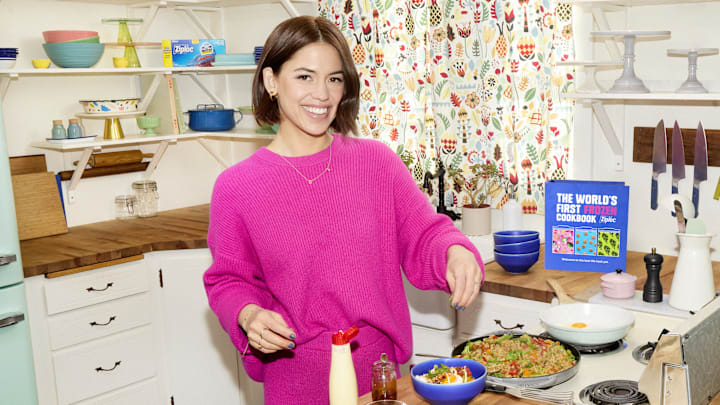With consumers being more cost conscious, food waste creates more issues than just poor planning. The impact that it has on shoppers’ grocery budget is more than splurging on that impulse candy buy at the check out. Learning to utilize all food, in a creative way, is key to not only saving dollars and cents but also stretching each meal just a little bit further. For Molly Yeh, the freezer opens a treasure full of ingredients, and Ziploc keeps them ready to be used.
Recently, Ziploc, in partnership with Molly Yeh, launched the first ever "World's First Frozen Cookbook by Ziploc.” While those words might give people pause, it is a challenge to look at food differently. The freezer is not where leftovers go to become covered in ice crystals only to be pitched into the bin. That chilly enclave holds a bounty of possibilities.
Through her partnership with Ziploc, Molly Yeh graciously spent some time sharing her thoughts on utilizing the freezer, and the food in it, creatively. Moving aside that pint of ice cream, the freezer can hold the key ingredients to a quick bite or a favorite dinner. Cooks just need to change their perspective on the kitchen essential.
Yeh specifically said, “the freezer is an incredible tool.” While she recalled how a few years ago, people would stock the freezer with heaping amounts of food, the idea is more than just taking advantage of the warehouse run. Those Ziploc bags do not have to be used just as single serve portion of frozen fruit. They hold a bounty of possibilities.
While Yeh has mastered freezer’s utility, my freezer can suffer from mystery ice blocks hidden under the box of last season’s Girl Scouts cookies. Since those errant bags are both food waste and money lost, Yeh has some simple advice to avoid the scenario going forward.
Yeh suggested having an adapted system. She said, “it is about building habits and systems. Usually, I do not freeze individual things. For example, I have my designated bags for scraps, like vegetable scrap bags. There is another bag that holds scraps from my daughter’s lunches cutout shapes. Another one can hold bones from a roasted chicken.”
For Yeh, it is about grouping food together with their potential use in mind. “I know that those vegetables are going to be great in a stock with the chicken bones. When I need to make stock, I know that I have it all together in one bag and it makes my life easier. I can dump the whole bag into the pot for stock and the work is done for me.”
That statement epitomizes what Yeh meant about creating systems. She sees ingredients and thinks about their potential. Whether it is a stock, a fried rice, or even a dessert, understanding how and why ingredients go together ensures that the Ziploc bag does not succumb to the freezer’s dreaded chilly hole of nothingness.
With her system, Yeh believes that she is more effective and efficient in the kitchen. Whether it is a day where the weather makes her want to stay home or the night when she wants a quick food solution to put on the table, the freezer holds plenty of options.
Spefically regarding this partnership, Yeh said, “the number one reason why I wanted to partner with Ziploc is because it truly is my go to. I’ve tried so many different types of ways of freezing scraps, and Ziploc’s bags are good at what they do.” Yeh mentioned that she even uses the bags a couple of times because they hold up well.
To get home cooks thinking about how to effectively and efficiently use that food, Yeh created a few recipes as part of the World's First Frozen Cookbook by Ziploc. These dishes, Ginger Scallion Veggie Fried Rice, Crunchy Parmesan, Salami and Kale Crumble, and Rose Berry Cookie Salad, showcase that food scraps have a second, third, or more use in the kitchen.
Whether it is the bread crust from the kids’ sandwiches or giving stale cookies a new life, cooks need to imagine before they toss. For example, that savory crumble is more than a crouton on a heap of lettuce. It adds some texture to pasta or depth to a soup.
While Yeh seems to have numerous ideas at her fingertips, they seem to be built on one key concept, building flavor. When asked about how she approaches creating flavor depth, she said, “building flavors within the recipes is all about familiarity with your main groups of flavors. Honestly, it comes with a lot of practice, like a lot of reading cookbooks, a lot of figuring out what your taste buds desire.”
One great way to start building that cooking confidence is with opening the "World's First Frozen Cookbook by Ziploc.” It may not guarantee an errant bag of vegetables gets covered up with that pint of ice cream, but it will prevent the dreaded phrase, there’s nothing to use to make tonight's dinner.
